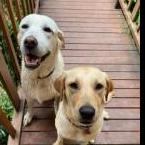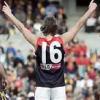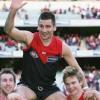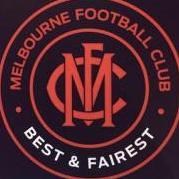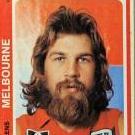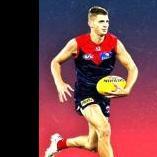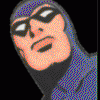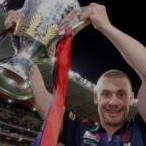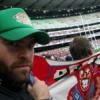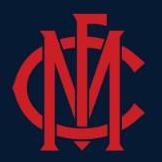Leaderboard
Popular Content
Showing content with the highest reputation on 29/10/19 in all areas
-
For me it's a no brainer. He'll be relatively cheap and with lists of approx. 44 what's the downside if he doesn't pan out ? His talent is undeniable. 37 disposals and 4 goals against us at the G was evidence of a very special player. He's a better talent than Geelong's recently departed Tim Kelly. If you can't take a risk when you haven't won a flag in over 50 years when can you ? I'll live very comfortably if he came to the Dees and never played a game. Btw, I can share that Goodwin and co. are very bullish about 2020. They're aiming for top 4 and think they can win it - (courtesy of a lunch between Goodwin and well-heeled Demons supporters). Naturally, the usual rebarbative posters will bloviate their inanities at such a suggestion.25 points
-
Jetta has a link to other members of the Bennell family, he'd have some input and certainly play a mentor role. Vitally important for this club moving forward that Nev is kept on after his playing days. Very highly regarded24 points
-
I didn’t think much of this until just now but when he had a stint at Peel Thunder, his nickname was ‘Basil’.12 points
-
Sam Edmond on SEN breaking news. Harley to have medical with dees tonight.11 points
-
10 points
-
Rumour only, and not from someone I know very well, but has been said that we started talking to him in July.10 points
-
The good news is that the medical team found out that his calf troubles were a result of a nerve being pushed against the muscle. Ive had the exact same thing where I couldn’t walk / stand for months and it felt like my calf and ankle was broken. Didn’t feel like nerve pain at all until I realised my piriformis muscle flared up and tightened around my L5 nerve. I got treatment done to loosen the muscle up and relieved my nerve pain and my calf / ankle completely healed. It took doctors and surgeons months to realise what it actually was..10 points
-
Bennell said on 7 news that he wants to play on the G.9 points
-
He just said on 7 news he hopes all goes well at the Dees fingers crossed9 points
-
9 points
-
l think this will get done. Both parties have gone public about the potential partnership which suggests they have an in principle agreement and he just needs to pass the medical. Its classic Mahoney media management8 points
-
8 points
-
I know this is from all the way back to 2014 but my oh my Harley can play. Big if’s but if we get him and if he is injury free at 27 yo he could still be in his prime. It is sort of like buying a lotto ticket, it is nice to dream8 points
-
8 points
-
Wondered where you'd got to, ProDee. Welcome back, if only for posting a sentence with two excellent words I'd never previously encountered.7 points
-
Talent-wise, none of them are in the same league as Bennell. A 100% fit and firing Bennell is in the top 10 players in the league, make no mistake of that. We all know the risks, but is it a gamble that I'd be willing to take? Absa-freakin-loutely.7 points
-
I wonder if Steven May is having a big say in this. I know they are quite close friends still and he would be in his ear big time.7 points
-
Bennell just been spotted having dinner in Hawthorn with May.6 points
-
If we pick up Bennell and Martin I will be comfortable to maybe, just maybe to contemplate draftIng 1 inside mid.6 points
-
Love it. No excuses. Fresh and fit list. Plenty of time to have a game plan and strategy to win.6 points
-
I’m usually against holding onto players who struggle with injury. Bennell is someone we should make an exception for. He’d be the most naturally talented player on our list, and top 5-10 in the whole league. There are very few capable of producing 37 disposal 6 goal games. He’s a freak talent. If it costs us bugger all, then it’s well worth the risk. This isn’t some AVB style battler, this is a potential superstar of the competition. Hope we perform due diligence and pull the trigger.6 points
-
We have played well 2 of the last 3 games there. Pretty much a free swing. Bring it on.6 points
-
Last year I wrote a profile on Adir Shiffman, the head of Catapult Sports, who make the GPS units (and all related software) worn in the AFL and just about every other major sporting competition in the world. Here's an edited version for anyone interested in how we got to where we are today. IT was the summer of 1988/89, little more than a year after the first hand-held mobile call was made in Australia. The World Expo had just wound up in Brisbane, John Howard was still in the first of two stints as Federal Opposition Leader, and Curtley Ambrose and Patrick Patterson were reprising memories of Bodyline as they led the West Indies to victory over the Aussies in the Frank Worrell Trophy. In the Melbourne suburb of Caulfield, 13-year-old Adir Shiffman was keeping score. Shiffman, a handy bowler himself who toured England with a representative team while at secondary school, had just finished coding a dynamic cricket scoreboard on his new Apple II computer. The computer was still a luxury item, and Shiffman says his programming produced a scoreboard with more bells and whistles than the one then used by Channel 9 in its coverage. Fast forward 30 years and Shiffman is now involved in a far more sophisticated numbers game; as the Executive Chairman of Catapult, the largest sports tech company in the world and the industry leader in athlete analytics. The small, wearable GPS sensors made by Catapult, which track athlete performance and output in a variety of ways, are used by more than 25,000 professional sportsmen and women across the globe, competing in just about any pursuit you care to name. The world’s biggest professional sporting leagues, including the National Basketball Association, National Football League, the National Hockey League and the English Premier League, as well as, closer to home, the Australian Football League and the National Rugby League, all employ Catapult technology. Catapult’s client base comprises more than 1500 teams in 50 countries. Much like the early mobile phones, the first GPS trackers were big, clunky and limited in their application. They couldn’t pick up the satellite signal indoors, rendering them useless at venues like Melbourne’s Docklands Stadium. They were also only accurate to within about a metre. Today the modern-day units have shrunk to the size of a matchbox, but it’s the software and technology that’s really evolved in the decade since the AFL first trialled Catapult gear in 2009. Fitted with gyroscopes, accelerometers, magnetometers and a range of inertial sensors that monitor every movement and exertion an athlete makes, today’s wearable sports technology measures everything from acceleration force to repeat high-intensity efforts. The units collect close to 1000 data points every second – about one-quarter of a billion data points over the life of an AFL game for 44 players. This information is then sent back to the coaching team’s computers, where it’s aggregated and paired up with video software (also supplied by Catapult) to give fitness staff and sports scientists a complete and detailed picture of an athlete’s every motion, whether it be in training or competition. “We deliver an end-to-end solution that individual athletes and teams can use in practice and in games, indoors and outdoors,” Shiffman says. “They can use it to identify injury trends, reduce injuries, improve performance, and manage the careers of their players. And it’s used in the game in real time now. Every AFL club is running live Catapult data to the sidelines to assist in substitutions and other tactical decisions.” After the AFL introduced an interchange cap in 2014, clubs were forced to reconsider the way they managed each player’s load over the course of a game. The Catapult units allowed them to monitor player fatigue and optimise the 90 rotations allowed. In the NFL, Catapult data revealed that over the course of the 2012 season, 80 per cent of training was spent standing around, an inefficient use of an athlete’s time. The software contains sports-specific algorithms, individually tailored to the particular motions of each sport. “In basketball, there’s lots of running backwards, for example, which is totally different to the side-to-side movements required to skate in ice hockey. In rugby league, players run forward, whereas AFL players run all over the place. There’s a lot of overlap between AFL and NFL – they’re both sports that involve a lot of running and jumping, and they’re both team-based evasion sports that involve a lot of exertion,” Shiffman explains. The information provided by the trackers can be categorised and presented in different ways, to suit the needs of players, coaches and the more technically-minded sports scientists and fitness analysts, who can fully customise the system to meet their club’s requirements. And what these technicians are all trying to do – the art of sports science - is find their own special data source within the numbers. The single performance measure or output that will unlock the door to success. In the world of elite sport, where millimetres and milliseconds can be the difference between winning and losing, even the smallest of advantages in training, preparation, or recovery can help tip the scales in one’s favour. “Athletes and the people who train them are aiming to peak at three key times: the right day of the week, the right part of the season, and the right point of their career. Catapult’s technology helps them to do that,” Shiffman says. In late 2015 Catapult temporarily lost a key AFL contract to sports statistics company Champion Data (the league owned a 49 per cent stake in the company). Shares in Catapult plunged 12 per cent on the back of the news. Shiffman attributes the setback to a “fundamental misunderstanding” by the AFL that Catapult and Champion Data were rivals, when in Shiffman’s eyes they offered complementary services. The support of the league’s clubs, most of whom were Catapult clients, helped persuade the league to strike a joint Champion Data-Catapult deal instead. Shiffman’s response to the crisis reveals much about his broader approach to business. “The way I look at it is that we didn’t lose it (the AFL deal), we were just down by a lot with 10 minutes to go. The siren hadn’t sounded. I’m a short-term paranoid but a long-term optimist,” he says. “I wasn’t surprised when the AFL made an interim decision to not use Catapult, because I always think the worst is going to happen to us. But I also think, the game is over when we win. If it’s a 100-metre race and you come second, well, you turn it into a 200-metre race, you just keep going, and you go until you win.” ALTHOUGH the use of wearable technology in elite sport is still in its infancy (Catapult was established in 2006), the seeds of the sports science industry were sown in the years after Shiffman’s birth. At the 1976 Montreal Olympics Australia’s team failed to win a single gold medal. Out of this failure the Australian Institute of Sport (AIS) was born, and one of its first orders of business was to establish sports medicine and sports science research programs. Shiffman believes the AIS’s decision to go down the sports science path was revolutionary at the time. “The idea of measuring the performance of athletes became a thing, it became standard. And the discipline of sports science (in Australia) became a genuine science alongside the other scientific disciplines, much earlier than anywhere else in the world.” In 2001, with $7 million grant money from the Commonwealth Government’s Co-operative Research Centres program, the AIS began to explore how micro-technology could assist in athlete training and performance. Seven years later that technology was commercialised in Catapult’s GPS trackers. Even without the pioneering role of the AIS, Shiffman says it’s no accident that Australia was the global pace-setter in the field. “The AFL was the cutting-edge sport globally for sports science. If you looked at where in the world the most interesting stuff was being done, where teams and the league embraced it the most, it was the AFL. And there’s a reason for that, when you compare the AFL and Australia with the US and NFL, and the investment in developing players. Contracts in the NFL can be terminated at will. There’s a much deeper talent pool than in the AFL so players are easily replaceable. With AFL, it’s hard to find good players. It’s a shallow talent pool, no-one else in the world plays the sport,” he says. “It’s not like the English Premier League where you can go and get an Italian player, or an Argentinian player. In the AFL, if you find a good player, you need to nurture their career to get the most out of it. The investment in the player, and the level of focus on managing their career is totally different. It’s much greater.” Shiffman is particularly excited by the role Catapult can play in injury prevention and rehabilitation. The company recently introduced a new algorithm into its baseball software to help mitigate the frequency and severity of elbow injuries among batters. “A lot of the outputs that come with the technology correlate with events that either indicate a risk of injury, or guide you on a return from injury. For example, with body symmetry – you can see how much exertion or how much movement is happening on each side of the body, so if someone has a weak knee, you’ll see that athlete favouring his healthy knee in the symmetry data.” The prospect of bringing sports fans into the picture is also enticing. AFL watchers will have noticed the introduction of player performance data used in television broadcasts in recent years. A footballer’s distance run and maximum speed are now regularly featured in coverage. “We’re right at the beginning of fan engagement with the technology - not even at the beginning - but we have deployed fan engagement analytics to broadcasts and to apps in real time, and it’s going to be increasingly used to bring all sorts of interesting stories to fans,” he enthuses. “Without access to such data, the fan in the stand is none the wiser. He or she might attribute performance outcome to desire and will, when really the reason is grounded in training and preparation.” Performance analytics products in elite sports are a $1 billion industry. But these figures are dwarfed by the burgeoning consumer market. Casual runners, walkers and cyclists are now monitoring their health and fitness via smartphone apps and devices, such as the Apple Watch and Fitbit. It’s estimated that more than 410 million wearable devices will be sold in 2020, worth $34 billion. “The growth of Fitbit has been helpful to us because it’s introduced people to the idea that you can wear something that captures data that can be useful for health,” Shiffman says. “But it’s a different category of technology. It doesn’t measure with the same level of precision and accuracy which professional monitors can achieve.” While excited about the growing interest, Shiffman warns the world of innovation is full of false promises. He cites the recent development of ‘smart textiles’ as an example of an emerging product requiring refinement. “You can make a fabric that has some conductivity, and as you breathe, the fibres stretch and compress, and that stretching changes the resistance in the conductivity of the fibres, and you run an electrical current through that and you can measure people breathing. It’s a great theory, and it’s getting closer to working consistently,” he says. “But how are you going to power that? The battery technology just isn’t there yet, it hasn’t kept up with other technological advances. You can’t build the battery into the smart garment, you have to use an external battery, which has bulk to it. And then you’re losing some of the advantages of smart textiles. You also have to ask yourself: How many times are you going to be able to wash it? Can you wash it every day? When are the electrical fibres going to start degrading? It’s cutting-edge stuff but it has its limitations.” With the lure of an estimated 500-700 million people playing soccer worldwide, Catapult moved into the amateur and semi-professional market in August 2016, acquiring the Ireland-based Playertek, an industry leader in the sub-elite sports tech space. The Playertek product is fundamentally the same as the elite model; a small GPS pod that sits in a compression vest and sends back data to an app on the player’s phone. There are packages to suit individual athletes and teams. The software allows the user to not only see how they performed but compare their output with previous efforts and compete against their friends and team-mates. They can also rate themselves against the professionals. It is the last of those features that offers Playertek its greatest advantage in the market. With tens of thousands of top-line players already using Catapult gear, Playertek has access to a vast store of elite performance metrics against which amateur and semi-professional sports men and women can compare. And while that information is currently only available in aggregated form (a soccer defender can compare themselves to an elite player in the same position, for example), Shiffman can foresee the day when the amateur athlete will be able to go to head-to-head with the sports star of their choice. It’s not hard to imagine a future when sports fans and punters will be betting on the numbers produced by Catapult systems. It’s a spin-off market with seemingly limitless possibilities, be they individual performance, player versus player or team against team. Despite receiving almost monthly calls from betting companies looking for a piece of the action, Shiffman insists it’s not on Catapult’s immediate agenda. In an industry where technology is changing so rapidly, it’s hard to predict what’s next in store for the company and its Executive Chairman. One thing is for sure: Shiffman’s passion and drive will endure, and that’s something that can’t be easily measured.6 points
-
6 points
-
This excites me greatly. He is free and if he can play at even 80% of his ability, his contribution will be felt.6 points
-
Nope. Right now he is a Delisted Free Agent. This means that during the FA signing period he can sign with any club at any agreed contract. If he chooses to train with multiple clubs during the lead-up to the draft, he will then lose his FA status and have to go into the PSD and see if anyone picks him, that is where he would nominate pay and contract length. . If he waits until after the draft and trains with one club, that club is able to take him as a supplemental rookie before the season begins in March. He has already decided against that PSD route. Melbourne has offered to have him train with them from December onwards. This would allow him to play in our pre-season games and we could then take him as a rookie in the same way we took Lackhart this year. It doesn't look like anyone is willing to pony up an upfront contract to grab him as a Free Agent without seeing if he can train first.5 points
-
This just in at the trade desk, I’ve been told that we’re a genuine 25% chance of snaring Bennell. More to come. #ETthetradebreaker. #Youhearditherefirst. #Ifyou’resecondyoumightaswellbelast.5 points
-
Dees Interest in Harley One step closer: It's believed a fourth Victorian side is bringing him back next week, while the Demons confirmed they plan to invite him to train with them in the pre-season from December 3. Bennell knocked back the chance to train with a team leading up to the national and rookie drafts, because he wants to choose his destination. We seem keen: "As a club, we have to look at every opportunity to make our list better, and Harley Bennell's obviously a very talented player," Demons football boss Josh Mahoney told the club's website."5 points
-
Dont mind this, young has to be a lock at 3, be way too hard to split it and still get him so i say no to splitting. stephens has played senior footy and played good senior footy and has the speed and foot skills to break a game open.(yes im a 3 minute highlight clip expert). Dare to dream Pick3 Young Pick8 Stephens/Kemp PSD2 Jack Martin Supplementary Rookie : Harley Bennell5 points
-
I'm relatively pleased with our trade period to date - Langdon, Tomlinson and then taking picks 3 and 8 into this year's draft. Landing Bennell would however give it the excitement that, for me, this trade period has been lacking. It literally turbo charges everything.5 points
-
Ridiculous talent indeed. Watched him kick 5 goals and gather 37 disposals against Geelong back in 2015 playing as an on baller.5 points
-
5 points
-
Firstly, not singling out the poster above, merely using the post as a reference point and there’s quite a few other good examples in this thread... I’m repeatedly surprised by the way “supporters” insist on reducing performance/underperformance to a singular catalyst. “We had a poor season... this one element was the cause!” (Insert Goodwin/Mahoney/McCartney/gameplay/playing list/etc. whatever In this similar case, it’s “Port had 2 consistently middling seasons, therefore their data analyst who we’ve brought on board mustn’t be any good, demonstrated by their lack of improvement” Could it not be a case that there were other factors that led to Port’s underperformance and that the data analysis was adequate or even one of the few bright spots? How could we possibly know? I just shake my head at the narrow-mindedness.5 points
-
My heart is beating again. The prospect of landing Bennell makes me feel as though we’re back in the mix - that we’re relevant again. Make it happen Josh - there’s zero risk here. Bennell at the G in the red and the blue is a bloody exciting prospect.4 points
-
mucho extra points for fitting in rebarbative, bloviate and inanities into one sentence......well played4 points
-
4 points
-
Exactly what our midfield is absolutely crying out for. Skill, outside speed, x factor and goals. If this guy gets going again, he'll be an A grader. There's very little risk associated with Bennell being on our list. I don't really care what his past is like. If we're taking him on, we'll have the right mentors around him (looking at you, Nev) and the only risk is a list spot. I'd prefer a punt on Bennell than 10-15 of the guys we've re-signed in the last year.4 points
-
4 points
-
Even if we dont end up taking the chance with Bennell, im really pleased that our club, which has a reputation for being ultra conservative, is at least taking the time to give him the once-over. The supporters have been craving some risk-taking, and this is just another example of how our club has changed. (Trading up to pick 8 this year and risking the loss of a very high pick to North next year being another) From the outside it COULD look like desperation, but from where i sit, this seems more like a club just willing to back itself, and its people, to identify risky choices that could have huge rewards. Go for it Dees.4 points
-
Hnmm I was a very silky HFF who never handballed and would try to kick miracle goals at every opportunity. Would kick 5 one week, then have a quiet game for a week or two, nearly get dropped and then kick 7 then go a bit quiet then respond with another 4-5. Used to drive coaches mad. The one attribute I had was Kicking. I was a truly magnificent kick of the Sherrin/ Faulkner. The Ross Faulkner footy were a magnificent footy to launch torps. Ah the memories.4 points
-
4 points
-
You obviously didnt get the dig i was having at ben russell4 points
-
Just confirmed via SEN: Harley Bennell to do a medical tonight with the Melbourne Football Club4 points
-
This is really good news and like others have said, this is where professionalism is important, get the right people to assess and make the decisions. You have to review, ask questions find out for yourself, adapt, it feels like we are doing that. Bennell is no doubt about it a high risk high reward proposition but when there are 44 spots on the list, 1 being taken up by a player with immense upside is worth it.3 points
-
I don’t believe it, Range Rover has friends!? Next you’ll tell me Bennell is having a medical with us.3 points
-
An update on some WA boys. Without starting another couple of threads about young prospects, I got a lift home from a party on Saturday night by Jake Pasini. I played some Masters footy with his Dad years ago and Jake would come down and train with us - a really nice kid. He couldn’t participate in the combine due to a shoulder but he did mention Melbourne interviewed him “twice” and in his modest opinion showed a “bit” of interest. He reckons he’ll go around the 40’s in the draft so unless we wheel and deal the hell out of lower picks I can’t see how we were really that interested in the first place - unless of course this was pre pick swaps with the Roos where he may have been in calcs. His good mate Riley Garcia who’s Dad is a mate of mine will probably end up at the Dogs going by how they interviewed him but a chance of the Suns they reckon. Jake also reckons that Deven Robertson will be the steal in this draft. Reckons as far as X factor goes, he’s the one.3 points
-
Those believing that Young is 'just a half-back flanker' are greatly underselling him. He may have played that position almost his entire under 18's year, but his attribute diversity and therefore upside is infinite. He has an incredible blend of attributes.3 points
-
Wasn't really a appalling decision when a player is actually in good strong form in the VFL like Petty was. But hey, anything to kick [censored] can Goody at all cost..3 points
This leaderboard is set to Melbourne/GMT+11:00

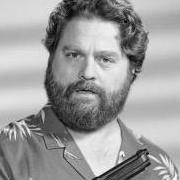
.thumb.jpeg.f764daa08d98c85e545c169a6d6e9d9b.jpeg)






